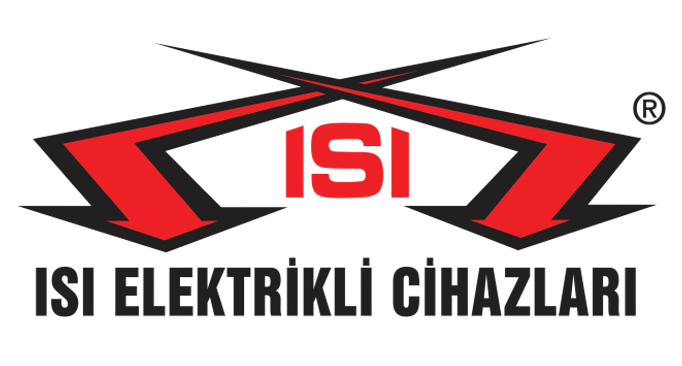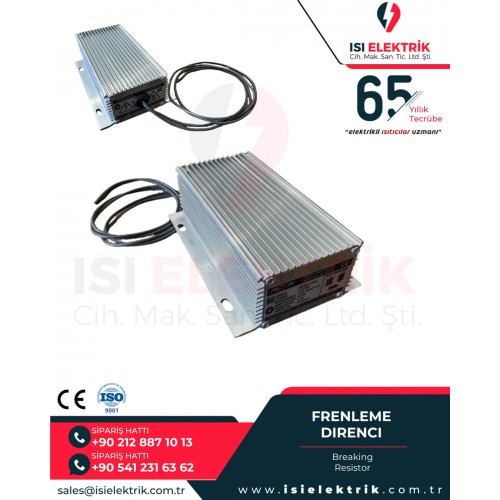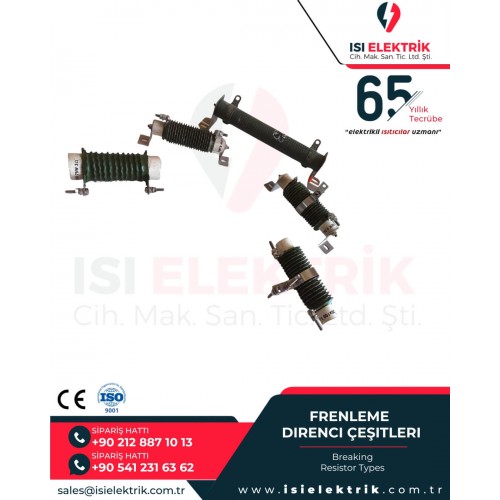Load and Braking Resistor
A braking resistor is a special resistor element that safely dissipates excess energy generated when electric motors slow down or stop by converting it into heat. Motors, especially during sudden stops, convert their rotational kinetic energy into electrical energy. This energy flows back to the DC bus of the drive, and if not properly dissipated, the system voltage can rise rapidly, potentially damaging the drive and other components. This is where the braking resistor comes into play.
In systems operating with a frequency converter or servo drive, the motor behaves like a generator. The excess energy generated during this process is directed to the braking resistor through the braking transistor. The resistor converts this energy into heat and safely releases it into the surrounding air. This mechanism protects both the motor and the drive from damage.
Braking resistors are particularly critical in high-cycle systems (frequent start/stop operations) and processes that require rapid stopping. They are essential components in many industrial applications such as cranes, conveyor lines, elevators, machine tools, and rail systems.
Additionally, in some systems where energy cannot be fed back to the grid, the braking resistor is the only safe method for energy dissipation. When not used with regenerative drives, the resistor becomes the primary element of the braking process.
Ceramic Insulator and Aluminum Body Load and Braking Resistors
- Offer superior resistance to high temperatures and harsh working conditions.
- Provide reliable performance in industrial automation, energy systems, and electric motor applications.
Main Features
- Ceramic insulator structure resistant to high heat
- Lightweight and durable aluminum body
- Long-lasting and reliable operation
- Suitable for demanding industrial environments
Braking Resistors – Function and Benefits
- Protect motors and drives by safely dissipating energy during sudden stops and speed control of electric motors.
- Increase system efficiency by effectively dissipating excess heat generated during energy conversion.
- Ideal solution for cranes, elevators, conveyor systems, trains, and other moving machinery.
Braking Resistor Application Areas
- Elevator and Escalator Systems: These systems involve frequent start-stop movements. During sudden stops, the feedback energy generated is safely dissipated through braking resistors.
- Cranes and Hoisting Systems: When lifting and lowering loads, the motors act as both motors and generators. Especially during lowering, the generated energy is converted into heat through braking resistors.
- Conveyor Lines: Long production lines contain multiple motorized units. When stopping, the kinetic energy accumulated across the system must be discharged quickly, which is achieved through braking resistors.
- Machine Tools and CNC Systems: In CNC machines requiring precise axis movements, sudden stops cause axis motors to feed high energy back into the DC bus. Braking resistors safely dissipate this energy.
- Rail Systems and Test Benches: In systems such as trains and trams or laboratory test benches, high-speed motors must be brought to a controlled stop. A large portion of this energy is converted into heat within braking resistors.
- Industrial Automation: In situations where energy feedback is not possible or economical, braking resistors are used to ensure the safety of the entire automation line.
Braking Resistor Technical Specifications
- Resistance Value (Ω): The resistance value of a braking resistor is determined by the DC bus voltage and the required braking power. The lower the resistance, the higher the current drawn at the same voltage, and the more energy is converted to heat. However, the resistance value must not be lower than the minimum value allowed by the drive’s braking transistor.
- Power Capacity (W or kW): Continuous and peak power ratings are critical. Continuous power indicates how much energy the resistor can dissipate over time, while peak power represents the maximum power it can handle during short braking intervals.
- Operating Voltage: The resistor must withstand the maximum voltage that can occur on the DC bus. Typical values are 310 Vdc (for 220 VAC systems), 540 Vdc (for 380 VAC systems), and 680 Vdc (for 500 VAC systems).
- Surface Temperature: High surface temperatures occur during braking. Therefore, the heat resistance of the materials used and the mounting location are important.
- Protection Class: In dusty, humid, or chemical environments, models with a high IP protection rating are preferred. For outdoor use, IP54 or higher models are recommended.
- Material Quality: Braking resistors are typically made using high-temperature resistant CrNi alloy wire, ceramic insulators, and aluminum finned housings.
How to Select a Braking Resistor
- 1. Collect Application Data: Gather data such as motor power, nominal voltage, system inertia, stopping time, and braking frequency.
- 2. Calculate Required Energy: Determine the amount of energy to be released during braking by calculating the kinetic energy of the motor.
- 3. Determine Resistance Value: Calculate the resistance value based on the DC bus voltage and the target braking current. The formula is generally R = V² / P.
- 4. Calculate Power Capacity: Consider the braking cycles to determine continuous and peak power ratings.
- 5. Thermal Design: Consider cooling conditions to prevent the resistor from overheating during operation. Natural or forced-air cooling systems may be chosen.
- 6. Safety Margin: Add a safety margin of 20–30% to the calculated values to protect the resistor during overloads.
Braking Resistor Advantages
- Protects the System: Safely dissipates high energy generated during braking, protecting drives and motors.
- Safe Stopping in Short Time: Enables high-speed systems to stop quickly and safely.
- Simple and Long-Lasting Design: Since there are no moving mechanical parts, it is durable and requires minimal maintenance.
- Stable Performance: Provides consistent performance even in applications with frequent braking.
- Energy Efficiency: In non-regenerative systems, it ensures controlled dissipation of excess energy, preventing sudden interruptions.
Materials Used in Braking Resistor Production
- Resistor Element: Usually CrNi alloy wire or film is used. These materials are highly heat-resistant and remain stable over time.
- Insulation: Ceramic insulators provide reliable electrical insulation thanks to their high heat resistance.
- Housing: Aluminum or galvanized steel housings provide effective heat dissipation. Finned designs improve natural cooling.
- Connection Components: Heat-resistant cables, terminals, and mounting accessories are used.
Technical Details to Consider When Selecting a Braking Resistor
Electrical Compatibility
- The chosen resistance value must comply with the minimum and maximum values allowed by the drive’s braking circuit.
- It must withstand the DC bus voltage and provide sufficient insulation against voltage spikes.
- The current capacity of the braking transistor must not be exceeded.
Thermal and Mechanical Design
- The resistor’s continuous and peak power ratings must match the required application cycles.
- The mounting area should be well-ventilated, with sufficient clearance around the resistor.
- The protection class should be suitable for dusty, humid, or outdoor environments.
- Mounting components must withstand high temperatures.
Safety and Standards
- Braking resistors should be manufactured in accordance with international standards (e.g., CE, UL, IEC).
- Since surface temperatures can reach inaccessible levels, the mounting position must ensure personnel safety.
- Short-circuit and grounding connections must be properly made.
Braking Resistors
- Braking resistors play a critical role in industrial automation and motor control systems in terms of safety, efficiency, and stability.
- A properly calculated and correctly installed braking resistor ensures long-term, failure-free operation of systems.
- Carefully analyzing technical parameters during the selection process provides both economic and safe solutions.
- In evolving industrial applications, braking resistors remain a classic yet indispensable energy management component.
Frequently Asked Questions


